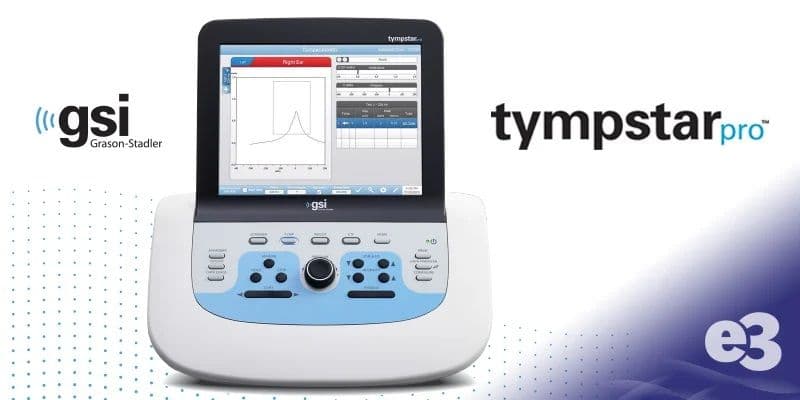An Overview of the New TympStar Pro Updates

GSI released updates to the TympStar Pro in early 2019. The updates include several requested enhancements, as well as two new tests. As with many of GSI’s products, the TympStar Pro has many features that help with efficiency and workflow. The TympStar Pro can function without these features; however, our users don’t always implement them immediately. Below, I review the major enhancements and additions to the TympStar Pro.
Multi Hz Testing: The Multi Hz test is an evaluation that will find resonance frequency of the outer and middle ear. For a quick review, the resonance frequency is the frequency at which the middle ear system is the most efficient for transferring energy (sound). This is the frequency where the springy portion and mass portion of susceptance have equal contribution in sound transfer. For adults, the resonant frequency usually is around 800 - 1200 Hz.
Multi Hz is an evaluation that can add diagnostic value when evaluating patients with middle ear disorders. If a patient has an ossicular discontinuity, the resonance frequency will be lower than normal; if a patient has an ossicular fixation, the resonance frequency will be higher than normal. Multi Hz is a dedicated test type on the “ more” section of the TympStar Pro. This test performs a tympanogram using a wideband “probe tone” from +200 to -400 daPa and performs specific calculations to determine the resonance frequency. It is then possible to review the morphology of the tympanogram at resonance frequency – and at other probe tone frequencies from 250 to 2000 Hz in 50 Hz steps. This can be a great tool to document pre- and post-surgery results and confirm success of surgical intervention for the patient and the physician.
Patulous ETF: Patulous Eustachian Tube (ET) testing is not a new concept for middle ear testing; however, in the past, it has been necessary to use reflex decay with no stimulus to document a patulous result. The TympStar Pro now has a dedicated Patulous ETF test to assist in measurement and documentation. A patulous ET is when a patient’s Eustachian tube is persistently open. This can be caused by significant weight loss, radiation, and hormonal changes such as pregnancy. Patients who experience a patulous ET report symptoms such as hearing themselves breathe, cracking sounds when chewing, aural fullness, own voice extremely loud, hyperacusis and odd symptoms such as hearing themselves blinking. The dedicated test type on the TympStar Pro allows the audiologist to record a tracing at peak pressure (with no stimulus) while the patient performs specific breathing tasks. GSI has included four standard conditions with the Patulous ET test – breathing normally, forced respirations, one nostril closed, and holding breath – and the audiologist can customize the conditions using the Configuration Application. The tracings are displayed side by side (like the reflex results) for easy interpretation. A tracing from a patulous ET will be rhythmic fluctuation of compliance similar to a sine wave.
Seek Below Start Level: This new feature makes threshold seek and auto sequence even more efficient by increasing and decreasing the dB level of the stimulus frequency automatically. When set to “ON”, if a reflex is detected at the initial start level of threshold seek, the stimulus dB level will decrease until no reflex is detected. The TympStar Pro will then verify the last detected reflex before automatically marking the level. This feature may be activated in the configuration application or from the settings icon on the reflex test type screen.
Baseline Configuration Options: This new option allows the user to select the point in the tympanogram at which ear canal volume (Vea) and static admittance is calculated. There are three options for baseline calculation: Positive Tail (+200): Vea/Admittance for all probe tones is calculated at the positive tail. Negative Tail (-400): Vea/Admittance for all probe tones is calculated at the negative tail. Auto (default setting/recommended): Vea/Admittance for a 226 Hz probe tone tympanogram is calculated at the positive tail and for a 1000 Hz probe tone tympanogram is calculated from the negative tail.
This firmware update is available now and there is no fee associated with adding these the new features to your TympStar Pro; however, to use the new Multi Hz test, the probe must be re-calibrated. It is possible to use the new features except Multi Hz testing with your current calibration. Multi Hz and Patulous ET tests will be incorporated into the next version of GSI Suite. Test results for these test types may be printed directly to PDF or to any printer connected to the TympStar Pro.
For more details on this firmware update and its implementation, view the GSI webinar, GSI TympStar Pro v1.2: Implementing New Features for Efficient Testing, on Audiology Online.
